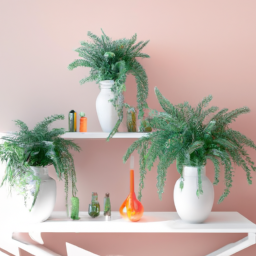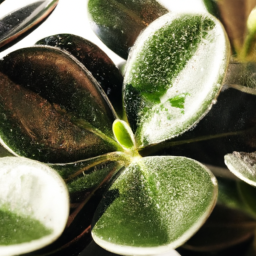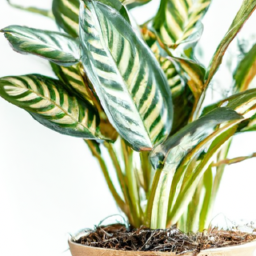
Welcome to our blog post on air-purifying plants for pet-friendly homes! If you’re a pet owner who is concerned about the air quality in your home, you’ve come to the right place. In this article, we will explore the benefits of incorporating air-purifying plants into your pet-friendly living space, and how they can help create a healthier environment for both you and your furry friends. Whether you have cats, dogs, or other pets, finding the right plants that are safe and effective in improving indoor air quality is essential. So, let’s dive in and discover the wonderful world of air-purifying plants for pet-friendly homes.
Top 10 Air-Purifying Plants for Pet-Friendly Homes
Creating a healthy and safe environment for both your pets and yourself is essential. One way to achieve this is by incorporating air-purifying plants into your home. Not only do these plants help to remove toxins from the air, but they also add a touch of natural beauty to your living space. However, it’s important to choose plants that are safe for your furry friends. In this guide, we will explore the top 10 air-purifying plants that are perfect for pet-friendly homes.
1. Spider Plant (Chlorophytum comosum)
The Spider Plant is a popular choice for pet owners due to its air-purifying abilities and non-toxic nature. This plant is excellent at removing formaldehyde, carbon monoxide, and other harmful substances from the air. It’s also easy to care for, making it an ideal choice for beginners. The Spider Plant has long, arching leaves that can add a touch of elegance to any room.
To care for your Spider Plant, place it in a well-lit area away from direct sunlight. Water it regularly, allowing the soil to dry slightly between waterings. Spider Plants are known for producing “spiderettes” or small offshoots, which can be propagated to grow new plants.
2. Boston Fern (Nephrolepis exaltata)
The Boston Fern is not only a beautiful addition to your home but also a powerful air purifier. It effectively removes formaldehyde, xylene, and other toxins from the air, making it a great choice for pet-friendly homes. This fern prefers high humidity and indirect light, making it perfect for bathrooms or kitchens.
To care for your Boston Fern, keep the soil moist but not waterlogged. Mist the leaves regularly to maintain humidity levels. If the air in your home is particularly dry, consider using a humidifier to create an optimal environment for your fern.
3. Areca Palm (Dypsis lutescens)
The Areca Palm, also known as the Butterfly Palm, is not only a visually appealing plant but also an excellent air purifier. It efficiently removes formaldehyde, benzene, and trichloroethylene from the air. This palm thrives in bright, indirect light and can grow quite tall, making it a statement piece in any room.
When caring for your Areca Palm, place it in a well-draining potting mix and water it regularly. Ensure that the top inch of soil remains slightly moist. Avoid overwatering, as it can lead to root rot. Additionally, wipe the leaves occasionally to remove dust and keep them looking vibrant.
4. Peace Lily (Spathiphyllum)
The Peace Lily is not only known for its elegant white flowers but also for its ability to purify the air. It effectively removes formaldehyde, benzene, and other volatile organic compounds (VOCs). However, it’s important to note that the Peace Lily contains calcium oxalate crystals, which can be toxic to pets if ingested in large quantities. Therefore, it’s best to keep this plant out of reach of curious animals.
To care for your Peace Lily, place it in a shady spot away from direct sunlight. Keep the soil evenly moist, but avoid overwatering. The Peace Lily will droop when it needs water, but it quickly recovers after being watered. Wipe the leaves occasionally to remove dust and keep them looking glossy.
5. Bamboo Palm (Chamaedorea seifrizii)
The Bamboo Palm, also known as the Reed Palm, is an excellent choice for pet-friendly homes. It effectively removes formaldehyde, benzene, and other toxins from the air. This palm thrives in bright, indirect light and can tolerate lower light conditions, making it versatile for different areas of your home.
When caring for your Bamboo Palm, place it in well-draining soil and water it regularly. Allow the top inch of soil to dry before watering again. This palm prefers slightly higher humidity levels, so misting the leaves or using a humidifier can be beneficial.
6. Rubber Plant (Ficus elastica)
The Rubber Plant is a popular choice for pet owners due to its air-purifying properties and low maintenance requirements. It effectively removes formaldehyde, benzene, and other toxins from the air. This plant has large, glossy leaves that add a tropical touch to any room.
To care for your Rubber Plant, place it in bright, indirect light. Water it when the top inch of soil feels dry, and ensure that excess water drains properly. Avoid placing the plant near cold drafts or in temperatures below 50°F (10°C). Additionally, wipe the leaves occasionally to remove dust and keep them looking shiny.
7. Dracaena (Dracaena spp.)
Dracaena plants come in various species, all of which are excellent air purifiers. Some popular varieties include the Dragon Tree (Dracaena marginata) and the Corn Plant (Dracaena fragrans). These plants effectively remove benzene, formaldehyde, and trichloroethylene from the air.
When caring for your Dracaena, place it in bright, indirect light. Water it when the top inch of soil feels dry and ensure that excess water drains properly. Dracaena plants are sensitive to fluoride, so it’s best to use distilled or filtered water. Occasionally wipe the leaves to remove dust and keep them looking vibrant.
8. English Ivy (Hedera helix)
English Ivy is a versatile plant that can be grown as a hanging plant or trained to climb a trellis or wall. It effectively removes benzene, formaldehyde, and other toxins from the air. However, it’s important to note that English Ivy can be toxic to pets if ingested in large quantities, so it’s best to keep it out of reach.
To care for your English Ivy, place it in bright, indirect light. Water it when the top inch of soil feels dry, but avoid overwatering. English Ivy prefers cooler temperatures, making it an excellent choice for rooms with lower humidity levels. Regularly trim the vines to maintain the desired shape and size.
9. African Violet (Saintpaulia)
The African Violet is a compact and colorful plant that adds a pop of color to any pet-friendly home. It effectively removes formaldehyde, benzene, and other toxins from the air. This plant thrives in bright, indirect light, making it perfect for windowsills or well-lit areas.
To care for your African Violet, place it in a well-draining potting mix and water it from the bottom to avoid getting the leaves wet. African Violets prefer slightly higher humidity levels, so using a tray filled with water and pebbles can help create a humid microclimate. Avoid getting water on the leaves, as it can cause spotting or damage.
10. Money Plant (Epipremnum aureum)
The Money Plant, also known as Devil’s Ivy, is a popular choice for pet-friendly homes due to its air-purifying abilities and low maintenance requirements. It effectively removes formaldehyde, benzene, and other toxins from the air. This trailing plant can be grown in hanging baskets or trained to climb a trellis.
To care for your Money Plant, place it in bright, indirect light. Water it when the top inch of soil feels dry, but avoid overwatering. This plant can tolerate lower light conditions, but its growth may slow down. Regularly prune the vines to maintain the desired shape and size.
By incorporating these air-purifying plants into your pet-friendly home, you can create a healthier and more enjoyable living environment for both you and your furry friends. Remember to always research the specific care requirements of each plant and ensure that they are placed out of reach of curious pets. Enjoy the benefits of cleaner air and the natural beauty these plants bring to your home!
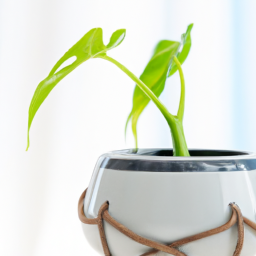
Benefits of Air-Purifying Plants for Pet-Friendly Homes
Having pets in our homes brings us joy and companionship, but it also comes with certain challenges, such as pet odors and dander. Luckily, there is a natural and effective solution to improve the air quality in your pet-friendly home – air-purifying plants. These plants not only beautify your living space but also filter out harmful toxins from the air, creating a healthier environment for both you and your furry friends. In this article, we will explore the numerous benefits of incorporating air-purifying plants into your pet-friendly home.
1. Improved Air Quality
Pets, especially those with fur, can contribute to poor air quality inside our homes. Pet dander, saliva, and urine can release allergens and other particles into the air, which can cause respiratory issues in humans and pets alike. Air-purifying plants act as natural air filters by absorbing these pollutants and releasing fresh oxygen. They can help remove airborne toxins, such as formaldehyde, benzene, and xylene, which are commonly found in household products and can be harmful to both humans and pets.
Plants like the Boston Fern, Spider Plant, and Bamboo Palm are known for their air-purifying properties. These plants have the ability to absorb and break down harmful chemicals, reducing the overall toxic load in your home. By incorporating these plants into your pet-friendly home, you can significantly improve the air quality and create a healthier living environment for everyone.
Furthermore, air-purifying plants can also help control pet odors. Some plants, like the Peace Lily and Areca Palm, have natural deodorizing properties and can effectively neutralize unpleasant smells. Instead of relying on artificial air fresheners, which may contain harmful chemicals, consider adding these plants to naturally freshen the air in your home.
2. Stress Reduction
Pets are sensitive creatures, and changes in their environment can sometimes lead to stress and anxiety. Air-purifying plants can play a role in creating a calming atmosphere for both you and your pets. The presence of greenery has been shown to have a positive impact on mental well-being, reducing stress levels and promoting relaxation.
Studies have found that being around plants can lower blood pressure and heart rate, leading to a greater sense of tranquility. This can be particularly beneficial for pets who may experience anxiety when left alone or during thunderstorms. By strategically placing air-purifying plants in your pet-friendly home, you can create a soothing environment that helps reduce stress and promotes a sense of calmness for both you and your furry companions.
It’s important to note that while air-purifying plants can provide stress relief for pets, some plants may be toxic if ingested. Therefore, it’s crucial to research pet-friendly plants and ensure they are safe for your furry friends to be around. Always consult with your veterinarian if you have any concerns about specific plants and their potential effects on your pets.
3. Natural Humidifiers
Pets, especially those with respiratory issues, can benefit from a humid environment. Dry air can exacerbate respiratory problems and lead to discomfort for both pets and humans. Air-purifying plants can act as natural humidifiers, releasing moisture into the air through a process known as transpiration.
Plants like the Boston Fern and English Ivy have high transpiration rates, which means they release a significant amount of moisture into their surroundings. This can help combat dry air in your pet-friendly home, providing relief for pets with dry skin, allergies, or respiratory conditions.
In addition to increasing humidity levels, air-purifying plants can also reduce dust in the air. The leaves of these plants act as natural dust collectors, trapping airborne particles and preventing them from circulating in your living space. This can be particularly beneficial for pets with allergies or sensitivities to dust.
However, it’s important to maintain proper watering practices to prevent over-humidification, which can create a breeding ground for mold and mildew. Monitor the moisture levels in your home and adjust your plant care routine accordingly to ensure a healthy balance.
In conclusion, incorporating air-purifying plants into your pet-friendly home can have numerous benefits. From improving air quality and reducing pet odors to providing stress relief and acting as natural humidifiers, these plants offer a natural and effective way to create a healthier and more enjoyable living environment for both you and your furry companions. Remember to choose pet-safe plants and properly care for them to maximize their benefits. So go ahead, green up your space and enjoy the many advantages of air-purifying plants!
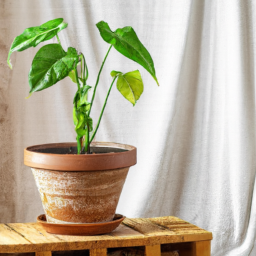
How to Choose the Right Air-Purifying Plants for Pet-Friendly Homes
Having pets in our homes brings immense joy and companionship, but it also means dealing with pet dander and odors. One effective and natural way to combat these issues is by incorporating air-purifying plants into your pet-friendly home. Not only do these plants enhance the aesthetic appeal of your living space, but they also filter out harmful toxins from the air, making it cleaner and healthier for both you and your furry friends. However, not all plants are suitable for homes with pets, as some can be toxic if ingested. In this comprehensive guide, we will walk you through the process of choosing the right air-purifying plants for your pet-friendly home, ensuring a safe and serene environment for everyone.
Understanding Pet-Friendly Air-Purifying Plants
When selecting air-purifying plants for your pet-friendly home, it is crucial to consider the safety of your pets. Some plants can be toxic to dogs and cats if ingested, causing a range of symptoms from mild discomfort to severe illness. To avoid any potential harm, it is essential to choose plants that are non-toxic and safe for your beloved pets.
One excellent option is the Spider Plant (Chlorophytum comosum). This popular houseplant not only helps remove common airborne toxins like formaldehyde and xylene but is also safe for pets. Spider Plants are easy to care for and can thrive in various lighting conditions, making them a perfect choice for pet-friendly homes.
Another pet-friendly air-purifying plant is the Boston Fern (Nephrolepis exaltata). This lush and vibrant plant not only adds a touch of green to your home but also helps eliminate pollutants such as formaldehyde and xylene. Boston Ferns are non-toxic to pets, making them an excellent choice for households with curious cats or dogs.
The Bamboo Palm (Chamaedorea seifrizii) is another fantastic option for pet-friendly air purification. This elegant plant is highly effective at removing formaldehyde, benzene, and trichloroethylene from the air. Moreover, Bamboo Palms are non-toxic to pets, making them a safe addition to your home.
Factors to Consider When Choosing Air-Purifying Plants
Now that you are aware of some pet-friendly air-purifying plants, it is essential to consider a few factors before making your final selection. These factors will help you choose plants that not only purify the air but also thrive in your specific living environment.
1. Pet Behavior: Consider the behavior of your pets when selecting air-purifying plants. Some pets are naturally curious and may nibble on plants, while others may simply knock them over during play. Opt for plants that are non-toxic and can withstand some level of pet interaction.
2. Light Conditions: Evaluate the lighting conditions in your home before choosing air-purifying plants. Some plants thrive in bright, indirect light, while others can tolerate low-light conditions. Select plants that can adapt to the available light in your living space to ensure their healthy growth.
3. Maintenance Requirements: Consider the level of maintenance you are willing to provide for your air-purifying plants. Some plants require regular watering and pruning, while others are more low-maintenance. Choose plants that align with your lifestyle and time availability to ensure their longevity.
4. Air-Purifying Effectiveness: Different air-purifying plants have varying degrees of effectiveness in removing pollutants from the air. Research the specific plants you are considering and prioritize those that are known to be highly effective in purifying the air in your home.
Tips for Incorporating Air-Purifying Plants in Your Pet-Friendly Home
Once you have selected the right air-purifying plants for your pet-friendly home, it’s time to incorporate them seamlessly into your living space. Here are some tips to help you create a harmonious environment for both your pets and plants:
1. Pet-Friendly Placement: Position your plants in areas that are inaccessible or less appealing to your pets. Consider using hanging planters or elevated shelves to keep them out of reach. This will prevent any accidental ingestion or damage to the plants.
2. Pet-Safe Soil: Use pet-safe soil or potting mix for your air-purifying plants. Regular garden soil may contain fertilizers or chemicals that can be harmful if ingested by pets. Opt for organic or pet-friendly soil options to ensure the safety of your furry companions.
3. Regular Cleaning: Dust and pet dander can accumulate on the leaves of your air-purifying plants, hindering their effectiveness. Regularly clean the leaves with a damp cloth or give them a gentle shower to remove any build-up. This will help the plants thrive and maintain their air-purifying capabilities.
4. Monitor Plant Health: Keep a close eye on the health of your air-purifying plants. If you notice any signs of wilting, discoloration, or pest infestation, take immediate action to address the issue. Healthy plants are more efficient at purifying the air and contribute to a healthier home environment.
By following these guidelines and considering the safety of your pets, you can create a pet-friendly home that is not only visually appealing but also promotes clean and fresh air. Air-purifying plants not only enhance the overall well-being of your household but also provide a calming and natural ambiance. So go ahead, choose the right air-purifying plants, and enjoy the benefits of a healthier and happier home for both you and your beloved pets!
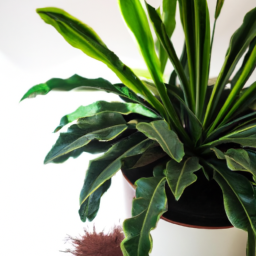
Common Air-Purifying Plants that are Safe for Pets
Creating a healthy and safe environment for both you and your furry friends is essential. One way to achieve this is by incorporating air-purifying plants into your home. Not only do these plants help to remove toxins from the air, but they also add a touch of natural beauty to your living space. However, it’s important to choose plants that are safe for your pets, as some plants can be toxic if ingested. In this guide, we will explore four common air-purifying plants that are safe for pets.
1. Spider Plant
The spider plant (Chlorophytum comosum) is a popular choice for pet owners due to its air-purifying properties and non-toxic nature. This plant is known for its long, arching leaves that are green with white stripes, resembling spider legs. Spider plants are effective at removing formaldehyde, xylene, and carbon monoxide from the air.
When it comes to pets, spider plants are safe for both cats and dogs. Even if your furry friend decides to take a nibble, they are unlikely to suffer any adverse effects. However, it’s always a good idea to monitor your pets around any plants and discourage them from chewing on the leaves.
To care for a spider plant, place it in a well-lit area, but away from direct sunlight. They prefer slightly moist soil, so water them regularly, allowing the soil to dry out between waterings. Spider plants are also known for producing small white flowers and baby spider plantlets, which can be propagated to grow new plants.
2. Boston Fern
The Boston fern (Nephrolepis exaltata) is not only a beautiful addition to your home but also an excellent air purifier. This fern is known for its feathery, delicate fronds that create an elegant and calming atmosphere. It effectively removes formaldehyde, xylene, and toluene from the air.
When it comes to pets, Boston ferns are non-toxic and safe for both cats and dogs. However, some pets may be tempted to chew on the fronds, which can cause an upset stomach. To prevent this, make sure to place the fern in a location that is out of reach for your curious companions.
Boston ferns thrive in bright, indirect light and high humidity. Keep the soil consistently moist but not waterlogged. Misting the fronds occasionally can help maintain the humidity levels they prefer. With proper care, your Boston fern will flourish and contribute to a healthier indoor environment.
3. Areca Palm
The Areca palm (Dypsis lutescens), also known as the butterfly palm, is a popular choice for pet-friendly homes. This palm species has feathery, arching fronds that add a tropical touch to any space. It is highly effective at removing formaldehyde, xylene, and toluene from the air.
Areca palms are non-toxic to both cats and dogs, making them a safe choice for pet owners. However, it’s important to note that the palm fronds can be sharp, so it’s best to place the plant in an area where your pets won’t accidentally brush against it.
To care for an Areca palm, place it in a well-lit spot away from direct sunlight. These palms prefer well-draining soil, so make sure not to overwater them. Allow the top inch of soil to dry out before watering again. With regular watering and occasional misting, your Areca palm will thrive and contribute to cleaner air in your home.
4. Bamboo Palm
The bamboo palm (Chamaedorea seifrizii) is a compact palm plant that is both pet-friendly and an excellent air purifier. With its dense clusters of delicate fronds, it adds a touch of elegance to any room. Bamboo palms are effective at removing formaldehyde, xylene, and toluene from the air.
When it comes to pets, bamboo palms are non-toxic and safe for cats and dogs. However, as with any plant, it’s best to discourage your pets from chewing on the leaves to avoid any potential digestive issues.
Place your bamboo palm in an area with bright, indirect light. They prefer well-draining soil, so make sure not to overwater them. Allow the top inch of soil to dry out before watering again. With proper care, your bamboo palm will thrive and contribute to a healthier indoor environment for both you and your pets.
By incorporating these common air-purifying plants into your pet-friendly home, you can create a cleaner and safer environment for everyone. Remember to always monitor your pets around plants and discourage them from chewing on the leaves. With proper care and attention, your air-purifying plants will not only enhance the aesthetics of your home but also contribute to the well-being of both you and your beloved pets.
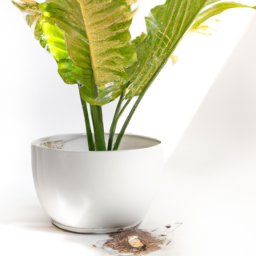
DIY Tips for Creating a Pet-Friendly Indoor Garden with Air-Purifying Plants
Welcome to our comprehensive guide on creating a pet-friendly indoor garden with air-purifying plants. In this article, we will provide you with step-by-step tips on how to design and maintain an indoor garden that not only enhances the air quality of your home but also ensures the safety of your beloved pets.
Choosing the Right Air-Purifying Plants
When it comes to selecting air-purifying plants for your pet-friendly indoor garden, it’s essential to consider the safety of your furry friends. Some plants may be harmful or toxic to pets if ingested. Here are some pet-friendly air-purifying plants that you can confidently include in your indoor garden:
1. Spider Plant (Chlorophytum comosum): Spider plants are not only excellent air purifiers but also non-toxic to both cats and dogs. They are easy to care for and can thrive in various lighting conditions, making them a perfect addition to any indoor garden.
2. Boston Fern (Nephrolepis exaltata): Boston ferns are known for their ability to remove harmful toxins from the air. These ferns are safe for pets and can add a touch of elegance to your indoor garden. However, make sure to keep the soil consistently moist to prevent the ferns from drying out.
3. Areca Palm (Dypsis lutescens): Areca palms are not only visually appealing but also effective at purifying the air. These palms are non-toxic to pets and can thrive in bright, indirect light. However, it’s important to note that overwatering can lead to root rot, so be mindful of your watering routine.
Designing Your Pet-Friendly Indoor Garden
Now that you have chosen the right air-purifying plants for your pet-friendly indoor garden, it’s time to design the perfect space for both your plants and pets to coexist harmoniously. Follow these steps to create an inviting and safe environment:
1. Determine the Ideal Location: Find a suitable spot in your home that receives adequate natural light for your plants. Consider the accessibility for your pets and ensure that the chosen area is free from any potential hazards.
2. Create Barriers: If you have curious pets who may be tempted to nibble on your plants, consider using barriers such as decorative fencing or pet gates to keep them away. This will help protect your plants and prevent any accidental ingestion.
3. Use Pet-Safe Soil: Opt for pet-safe soil or potting mix for your indoor garden. Regular garden soil may contain fertilizers or chemicals that could be harmful to your pets if ingested. Look for organic or pet-friendly alternatives to ensure the safety of your furry friends.
Maintaining Your Pet-Friendly Indoor Garden
Once your pet-friendly indoor garden is set up, it’s important to establish a regular maintenance routine to keep your plants healthy and your pets safe. Here are some essential tips for maintaining your indoor garden:
1. Watering: Each plant has different water requirements. Research the specific needs of your chosen air-purifying plants and establish a watering schedule accordingly. Avoid overwatering, as it can lead to root rot and other plant health issues.
2. Pruning: Regularly trim and prune your plants to maintain their shape and promote healthy growth. Remove any dead or damaged leaves to prevent them from becoming a temptation for your pets.
3. Pet-Proofing: Continuously monitor your indoor garden and ensure that it remains pet-friendly. Check for any fallen leaves or flowers that could be harmful if ingested. If necessary, relocate certain plants to higher shelves or hanging baskets to prevent your pets from reaching them.
By following these DIY tips, you can create a pet-friendly indoor garden with air-purifying plants that not only beautify your home but also contribute to a healthier environment for both you and your pets. Remember to research each plant’s specific care requirements and consult a veterinarian if you suspect your pet has ingested any toxic plant material. Enjoy the benefits of a fresh and clean indoor space while creating a safe haven for your furry friends!
Key Takeaways
If you are a pet owner and want to improve the air quality in your home, incorporating air-purifying plants is a great solution. Not only do these plants add a touch of nature to your living space, but they also help filter out toxins and harmful chemicals from the air. However, it’s crucial to choose plants that are safe for your furry friends.
One excellent option is the Spider Plant, which is known for its air-purifying properties and is non-toxic to both cats and dogs. Another pet-friendly plant is the Boston Fern, which not only removes pollutants but also adds humidity to the air, benefiting both you and your pets. Additionally, the Areca Palm is a beautiful and effective plant that removes harmful substances and is safe for pets.
Before bringing any new plants into your home, it’s essential to research their toxicity levels and ensure they won’t pose a threat to your pets. By selecting the right air-purifying plants, you can create a healthier and more vibrant environment for both you and your furry companions.
Your Burning Questions Answered:
Q1: What are air-purifying plants?
A1: Air-purifying plants are houseplants that have the ability to remove toxins and pollutants from the air, improving indoor air quality.
Q2: Are there specific air-purifying plants suitable for pet-friendly homes?
A2: Yes, there are air-purifying plants that are safe for pets. These plants have non-toxic properties and are considered pet-friendly.
Q3: Why should I consider air-purifying plants for my pet-friendly home?
A3: Air-purifying plants can help eliminate harmful chemicals and improve the air quality in your home, creating a healthier environment for both you and your pets.
Q4: Which air-purifying plants are safe for pets?
A4: Some pet-friendly air-purifying plants include spider plants, Boston ferns, areca palms, money plants, and bamboo palms. These plants are non-toxic to cats and dogs.
Q5: How do air-purifying plants help in removing toxins?
A5: Air-purifying plants absorb toxins through their leaves and roots, breaking them down and converting them into harmless byproducts. This process helps to cleanse the air in your home.
Q6: Can air-purifying plants help with pet odors?
A6: Yes, certain air-purifying plants like peace lilies and snake plants can help reduce pet odors by absorbing and neutralizing volatile organic compounds (VOCs) responsible for unpleasant smells.
Q7: Do air-purifying plants require special care?
A7: While air-purifying plants require regular care like any other houseplant, they generally have low maintenance requirements. Providing adequate sunlight, water, and occasional fertilization should be sufficient.
Q8: Can air-purifying plants be harmful to pets if ingested?
A8: While most air-purifying plants are considered safe for pets, some can cause mild gastrointestinal discomfort if ingested in large quantities. It’s always a good idea to monitor your pets and consult a veterinarian if you suspect they have consumed a significant amount of a plant.
Q9: Are there any air-purifying plants that are toxic to pets?
A9: Yes, there are a few air-purifying plants that are toxic to pets. Examples include the peace lily (spathiphyllum), snake plant (sansevieria), and pothos (epipremnum aureum). It’s important to research and avoid these plants if you have pets.
Q10: Where can I purchase air-purifying plants for my pet-friendly home?
A10: Air-purifying plants can be found at local nurseries, garden centers, and even online plant retailers. You can also consider checking with pet-friendly stores that offer a selection of non-toxic plants for homes with pets.
Dr. Olivia Green is a botanist with over two decades of experience in indoor plant cultivation. She holds a Ph.D. in Plant Biology and has dedicated her career to researching plant behavior in controlled environments. Dr. Green is passionate about helping plant enthusiasts master the art of indoor gardening through her extensive knowledge and practical insights.

